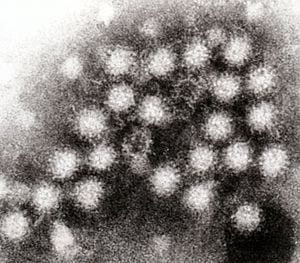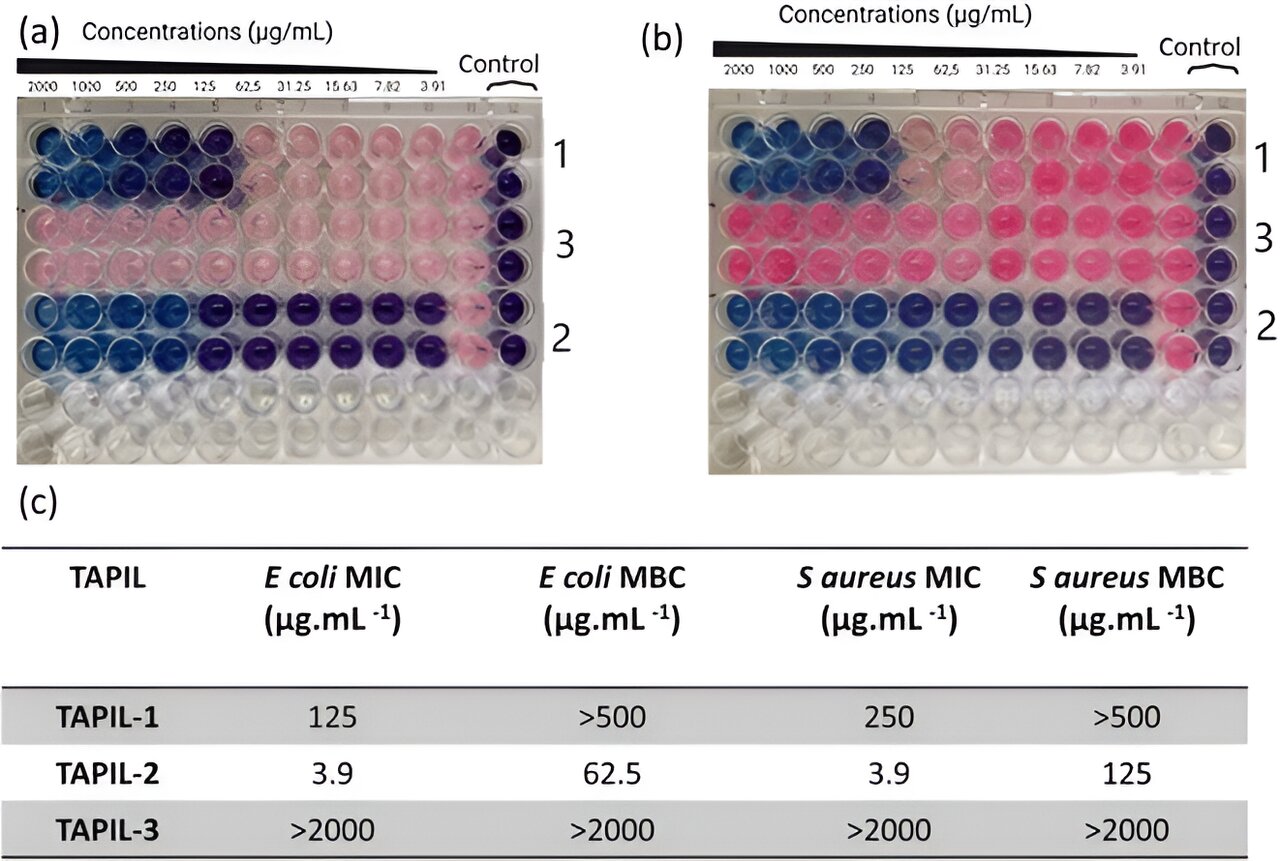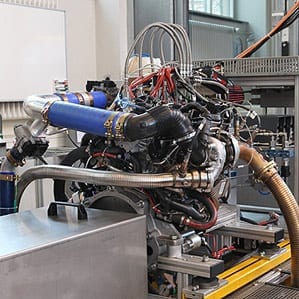
Scientists from the University of Southampton have discovered that copper and copper alloys rapidly destroy norovirus – the highly-infectious sickness bug.
Worldwide, norovirus is responsible for more than 267 million cases of acute gastroenteritis every year. In the UK, norovirus costs the National Health Service at least £100 million per year, in times of high incidence, and up to 3,000 people admitted to hospital per year in England.
There is no specific treatment or vaccine, and outbreaks regularly shut down hospital wards and care homes, requiring expensive deep-cleaning, incurring additional treatment costs and resulting in lost working days when staff are infected. Its impact is also felt beyond healthcare, with cruise ships and hotels suffering significant damage to their reputation when epidemics occur among guests.
The virus is highly infectious and can be contracted from contaminated food or water, person-to-person contact, and contact with contaminated surfaces, meaning surfaces made from copper could effectively shut down one avenue of infection.
The study, which was designed to simulate fingertip-touch contamination of surfaces, showed norovirus was rapidly destroyed on copper and its alloys, with those containing more than 60 per cent copper proving particularly effective.
Copper alloys have previously been shown to be effective antimicrobial surfaces against a range of bacteria and fungi. The Southampton research reported rapid inactivation of murine norovirus on alloys, containing over 60 per cent copper, at room temperature but no reduction of infectivity on stainless steel dry surfaces in simulated wet fomite and dry touch contamination. The rate of inactivation was initially very rapid and proportional to the copper content of alloy tested. Viral inactivation was not as rapid on brass as previously observed for bacteria but copper-nickel alloy was very effective.
One of the targets of copper’s antimicrobial activity was the viral genome and a reduced number of the gene for a viral encoded protein, VPg (viral-protein-genome-linked), which is essential for infectivity, was observed following contact with copper and brass dry surfaces.
Lead author Sarah Warnes, from the Centre for Biological Sciences at the University of Southampton, says: “The use of antimicrobial surfaces containing copper in clinical and community environments, such as cruise ships and care facilities, could help to reduce the spread of this highly infectious and costly pathogen.
“Copper alloys, although they provide a constant killing surface, should always be used in conjunction with regular and efficient cleaning and decontamination regimes using non-chelating reagents that could inhibit the copper ion activity.”
The Latest Bing News on:
Antimicrobial surfaces
- Castor oil: Acne reduction, hair growth and moisture retention are some of the key benefits of iton May 2, 2024 at 1:10 am
Acne reduction: Kumar says that with its potent antibacterial and anti- inflammatory properties, castor oil effectively fights acne by eliminating surface bacteria and ... to your daily skincare ...
- Use These 15 Common Herbs From Your Garden For A Cleaner Homeon May 1, 2024 at 2:00 pm
You can always use herbs for culinary purposes, but did you know that several types of common herbal plants can be used to help keep your home clean and fresh?
- These 10 household items repel bugs — and you probably have them at home alreadyon May 1, 2024 at 8:00 am
Made from plant-based ingredients and free from sodium lauryl sulfate (which can block pores and cause acne in some people), when used as directed, this effective, natural repellent spray can safely ...
- Before You Toss Those Used Tea Bags, Try This Cleaning Tip Firston April 30, 2024 at 10:30 am
This isn't just a clever way to reduce waste in the kitchen; it can also make your cleaning routine a little easier and more eco-friendly.
- Best queen size mattress: Top 9 options offering supportive sleeping surface and promoting proper spinal alignmenton April 30, 2024 at 4:12 am
Queen size mattresses are versatile, fitting well in most bedrooms without overpowering the space. Here’re top 9 picks for reduced disturbances while sleeping.
- Gender-neutral lavatories ‘have more germs than single-sex ones’on April 29, 2024 at 11:00 pm
Gender-neutral lavatories carry the most germs, research suggests. The UK study examined the bacteria – including multi-drug resistant superbugs – in a wealth of hospital settings. Lavatories for ...
- Pathogens including multi-drug resistant superbugs found on floors, ceilings and door handles of UK hospital toiletson April 29, 2024 at 3:10 pm
Pathogenic bacteria and fungi, including multi-drug resistant "superbugs" have been found on the floors, ceilings, door handles and other surfaces of hospital toilets in the UK, with patient toilets ...
- A New Class of Antimicrobial Compounds Discovered in Soil Bacteriaon April 29, 2024 at 12:05 pm
Hundreds of thousands of people die every year from antibiotic-resistant infections or from the complications of those infections, and the problem is only | Microbiology ...
- Climate change is multiplying the threat caused by antimicrobial resistance, researcher warnson April 24, 2024 at 3:10 pm
Climate change is multiplying the threat caused by antimicrobial resistance (AMR), amplifying its growing risk through increasing global temperatures, greenhouse gas emissions and rising sea levels.
- The 9 best walking shoes for womenon April 24, 2024 at 1:28 pm
Are your feet narrow or wide? Do you have joint pain? We’ve picked the most comfortable shoes to fit your needs.
The Latest Google Headlines on:
Antimicrobial surfaces
[google_news title=”” keyword=”antimicrobial surfaces” num_posts=”10″ blurb_length=”0″ show_thumb=”left”]
The Latest Bing News on:
Copper and copper alloys rapidly destroy viruses
- Copper prices today: Copper is up 18.61% this yearon April 26, 2024 at 5:18 am
What is the price of copper per pound? The price of copper opened today at $4.59 per pound, as of 9 a.m. ET. That’s up 0.23% from the previous day’s copper price per pound and up 18.61% since ...
- IBC Advanced Alloys Shifts Focus to Profitable Copper Alloys Divisionon April 25, 2024 at 5:00 pm
IBC's Copper Alloys division has operated profitably since the quarter ended September 30, 2020, for a total of 14 quarters. The Copper Alloys division operates a vertically integrated copper ...
- A Trace Element Effect in Alloys based on the Aluminium-Zinc-Magnesium Systemon April 22, 2024 at 4:59 pm
A notable example is the pronounced effect of traces of cadmium, indium, or tin on the elevated temperature ageing characteristics of aluminium–copper alloys 1. Similar observations have been ...
- ISRI2024: Copper makes gainson April 21, 2024 at 5:00 pm
The country’s imports of recycled copper and copper alloys from the U.S. increased 49.2 percent in the first two months of this year to 69,792 metric tons compared with 46,772 metric tons in the same ...
- Global distribution of copper semis first-use 2022, by typeon April 18, 2024 at 5:00 pm
Currently, you are using a shared account. To use individual functions (e.g., mark statistics as favourites, set statistic alerts) please log in with your personal ...
- Michigan approves 'extremely toxic' copper mine just 100ft from Lake Superior - which locals fear could destroy one of America's most beautiful state parkson April 10, 2024 at 2:05 pm
Michigan has approved a $50 million copper mine that has sparked outrage among residents due to its close proximity to Lake Superior. Canada-based Highland Copper is set to break ground 100 feet ...
- To Make Brass and Alloyson April 7, 2024 at 5:00 pm
This precaution is not necessary, unless the alloy contains a metal requiring a high temperature for its fusion, as, for instance, copper or iron. In alloys oontaining tin, however, a laler of ...
- The 1967 Exemplar I Is a Copper-Heavy One-Off Built on a Buick Riviera Gran Sport Chassison April 6, 2024 at 3:45 am
But while some remain in public memory for years, most of them are quickly forgotten and relegated ... not only for its extensive use of copper and copper alloys but also for Revelli's creative ...
The Latest Google Headlines on:
Copper and copper alloys rapidly destroy viruses
[google_news title=”” keyword=”copper and copper alloys rapidly destroy viruses” num_posts=”10″ blurb_length=”0″ show_thumb=”left”]










